How Working Lands Can Work for Pollinators by Bee Redfield, Conservation Director, Pollinator Partnership
Published August 4, 2025
The phrase “pollinator habitat” might conjure up sunlit prairies or neat rows of coneflowers in a home garden, but some of the most exciting conservation gains are happening in the margins: roadsides, solar fields, utility corridors, and working rights-of-way.
At Pollinator Partnership (P2), we’ve learned something - managed lands can be powerful partners for pollinators. When land is managed with intention, it can support diverse, resilient pollinator communities, and help restore ecological function across our everyday landscapes.
Roughly 60% of the land in the continental U.S. is privately owned, and much of the rest is managed by public agencies or utilities (USDA ERS, 2023). If we want to add meaningful habitat at scale, it must be integrated into these managed areas, not just protected spaces. Pollinators don’t care about boundaries. They care about blooms, shelter, and chemical-free forage.
Managed Landscapes That Matter
1. Roadsides (Departments of Transportation)

Departments of Transportation (DoTs) oversee more than 17 million acres of roadside lands in the U.S. Thoughtful mowing schedules, reduced herbicide use, and native plantings can turn these corridors into connected, thriving habitat. Roadsides with diverse wildflowers support more bees and butterflies than conventional turf or gravel shoulders (Hopwood et al., 2010).
Mythbuster: Don’t wildflowers mean more weeds and more mowing?
Actually, research shows that converting roadside vegetation to native wildflowers can boost insect diversity and reduce maintenance costs and efforts (Mody et al., 2020).
Photo 1. A roadside pollinator habitat planted by the Kentucky Transportation Cabinet, our 2024 NAPPC Roadside Management Award winner
2. Electric Utility Corridors
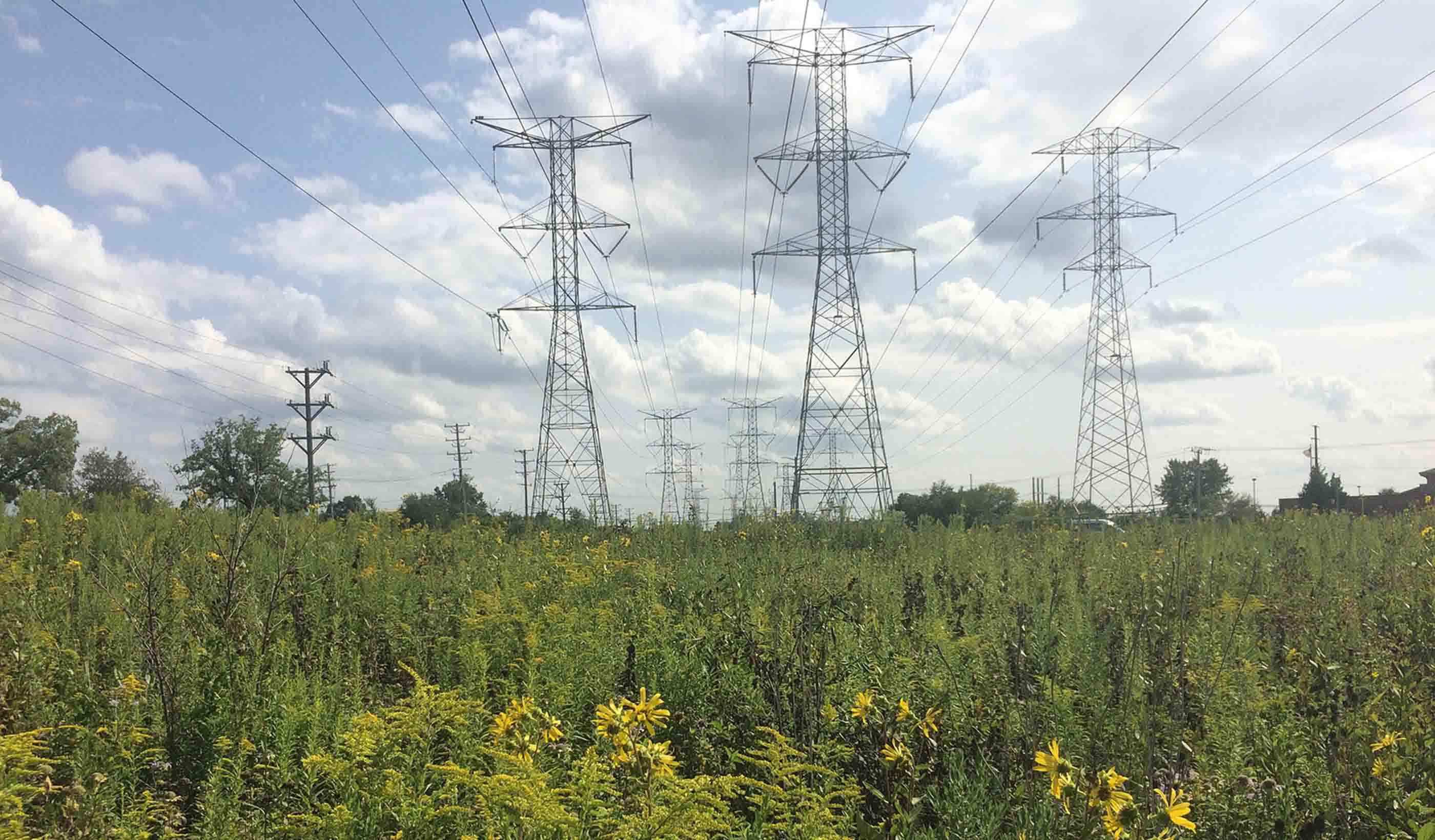
Transmission corridors offer open, sunlit spaces ideal for pollinator-friendly plants. Locally adapted, native vegetation supports nesting, foraging, and connectivity. Managed utility corridors have been shown to host higher pollinator diversity than adjacent unmanaged land (Wagner et al., 2019).
Mythbuster: Don’t utilities just spray everything down with herbicide?
In many cases, no! Utilities are increasingly adopting Integrated Vegetation Management (IVM), which reduces chemicals and promotes compatible, low-growing native species, boosting biodiversity while improving public safety and reliability of management (Wagner et al., 2019).
Photo 2. Electric power corridor with native pollinator planting, photo credit Stantec.
3. Rights-of-Way (Pipelines, Railroads, Telecom, Hydrocorridors, and more)
Linear corridors, like pipelines, rail lines, and broadband routes, can act as long-distance conservation pathways. With reduced mowing and with native seeding, they become habitat highways for monarchs and native bees (Cariveau et al., 2019).
Mythbuster: Aren’t these areas too narrow or fragmented to matter?
Quite the opposite! Rights-of-way often act as long, continuous corridors that connect isolated habitat patches, especially for species like monarchs that rely on broad landscapes for migration (Cariveau et al., 2019).
4. Solar Panel Installations
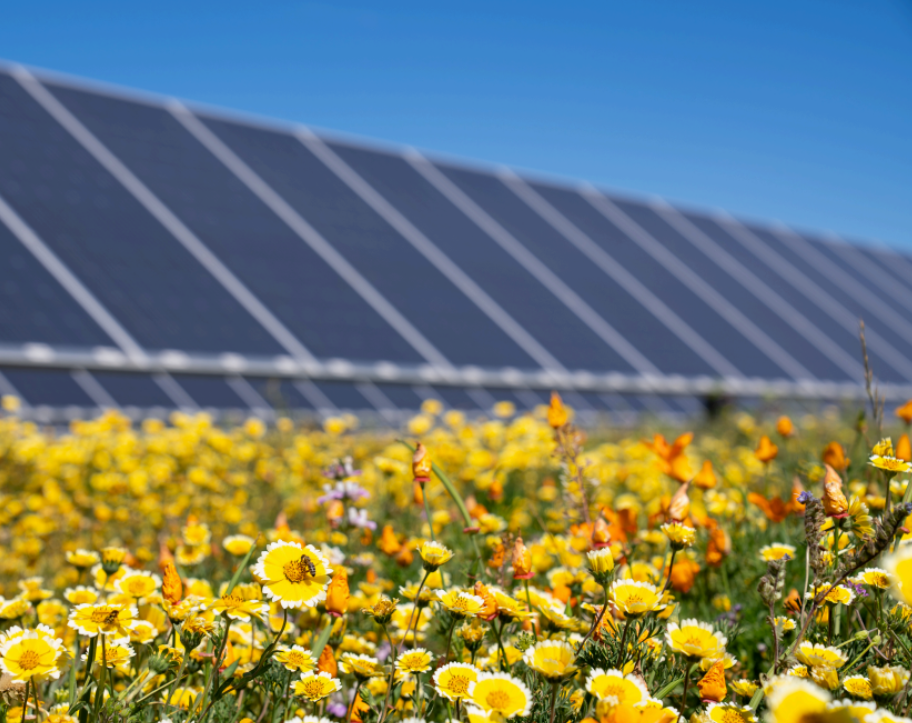
Pollinator-friendly solar is booming! Native plants beneath, between, and surrounding solar arrays reduce erosion, support monarch egg-laying, and enhance insect biodiversity (Walston et al., 2018). Incentives in several states now encourage or even require these practices.
Mythbuster: Can anything even grow under the panels?
Yes! Many pollinator-friendly solar sites use partial shade-tolerant species like some milkweeds (Asclepias spp.), clovers (Trifolium spp.), and native grasses (e.g. Bouteloua spp., depending on location). These plants thrive between and beneath panel rows, supporting both biodiversity and soil health (Walston et al., 2018).
Photo 3. A thriving pollinator planting featuring wildflowers under solar panels.
5. Agricultural Lands (Row Crops, Orchards)
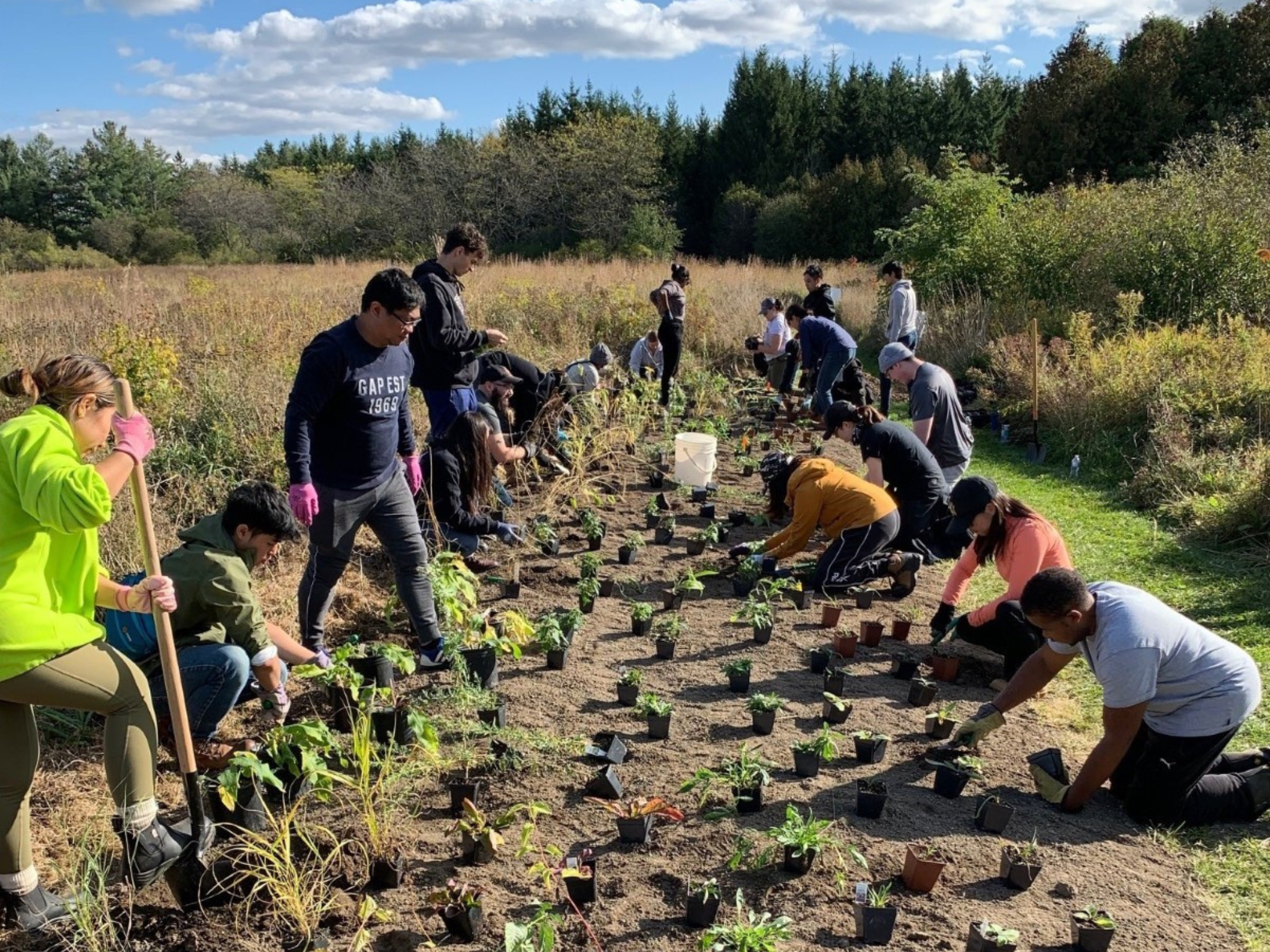
Flowering hedgerows, field borders, and cover crops can transform farm edges into pollinator habitat, all the while improving the return on investment. These practices increase native bee richness and improve crop pollination (Kremen et al., 2002; Garibaldi et al., 2013).
Mythbuster: Wouldn’t planting wildflowers pull the pollinators away from the actual crops?
Not at all. Practices like planting hedgerows, wildflower strips, and cover crops can dramatically increase pollinator diversity without reducing yields, often even boosting them through better pollination (Kremen et al., 2002). Additionally, habitat practices like these can support the beneficial insects that drive pests away.
Photo 4. An agricultural land pollinator planting project funded by Toyota Motors North America.
6. Grazed Rangelands and Pasture
Managed grazing systems that mimic natural disturbance (like patch-burn or rotational grazing) promote habitat structure and floral diversity critical for bees and butterflies (Kimoto et al., 2012).
Mythbuster: Doesn’t grazing destroy wildflowers?
It depends on how it's managed, and who is doing the grazing. Low-intensity or rotational grazing can actually increase floral diversity and structure, supporting more pollinators than overgrazed or idle lands (Kimoto et al., 2012). For example, goats excel at managing weeds and invasive plants, especially in rough or uneven terrain; cows are well-suited for large-scale vegetation control but may pose risks to sensitive habitats; and sheep, which tend to favor grasses over flowers, can help protect your investment in wildflower plantings.
7. Urban and Industrial Greenspaces
Parks, green roofs, cemeteries, and industrial campuses offer surprising biodiversity potential. Urban gardens often support more pollinator species than rural monocultures (areas with only one type of plant, like farm fields) (Baldock et al., 2015).
Mythbuster: Isn’t urban land too developed to support pollinators?
Surprisingly, no. Even small greenspaces in cities can support diverse native bee communities. In some cases, urban gardens host more pollinators than nearby rural sites (Baldock et al., 2015).
8. Military Installations and Airports
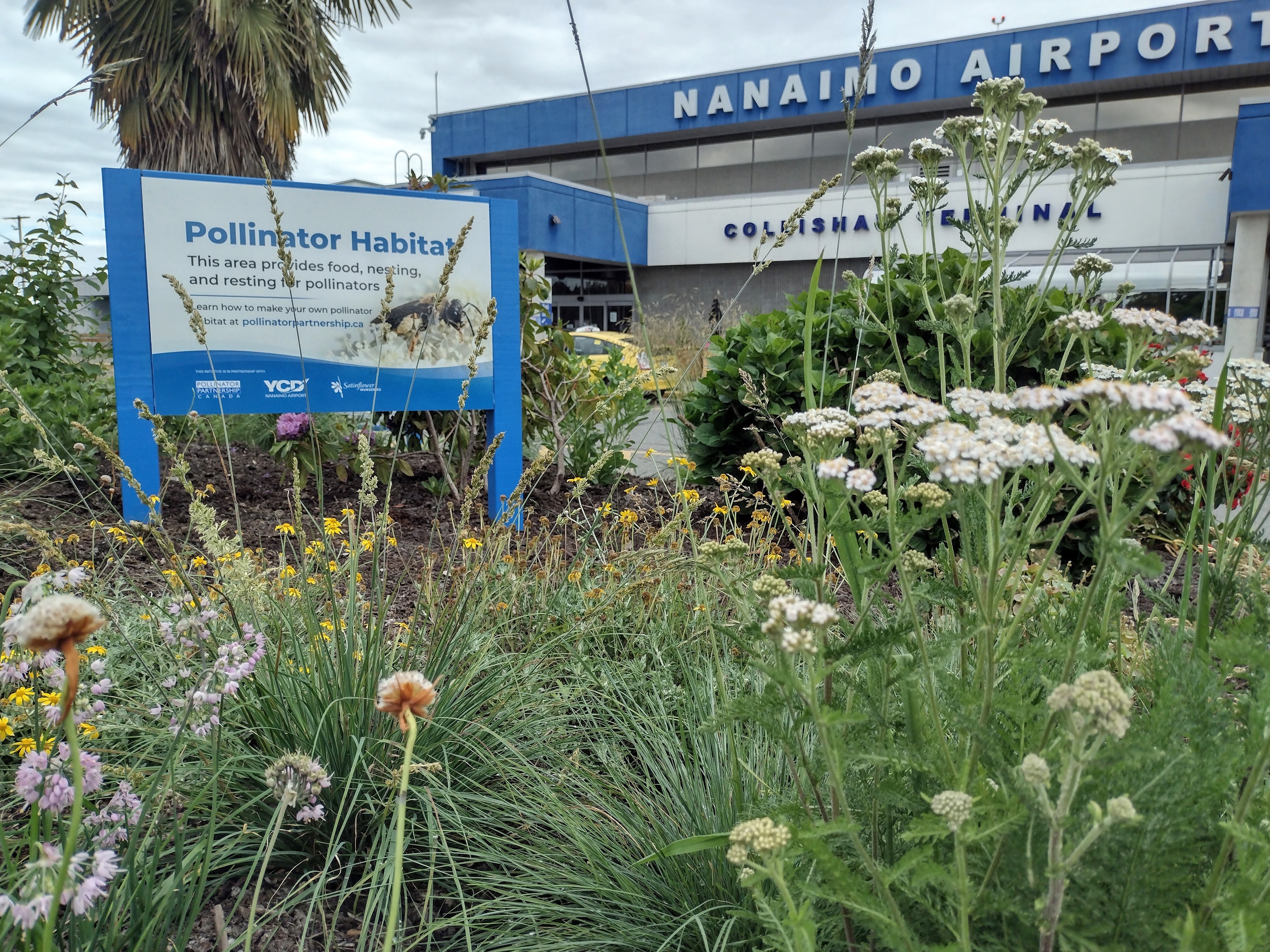
Military lands and airports often contain large, undeveloped areas. The Department of Defense (DoD) Readiness and Environmental Protection Integration (REPI) program supports pollinator-friendly practices that coexist with mission needs (Featherstone et al., 2019).
Mythbuster: Doesn’t active military use prevent habitat conservation?
Actually, many military lands are rich in biodiversity because of restricted development. Programs like REPI help balance defense needs with conservation priorities, including pollinator habitat management (Featherstone et al., 2019).
Photo 5. An ornamental pollinator garden at a public entrance to Vancouver Island Airport, Nanaimo, BC, Canada.
Climate and Co-Benefits
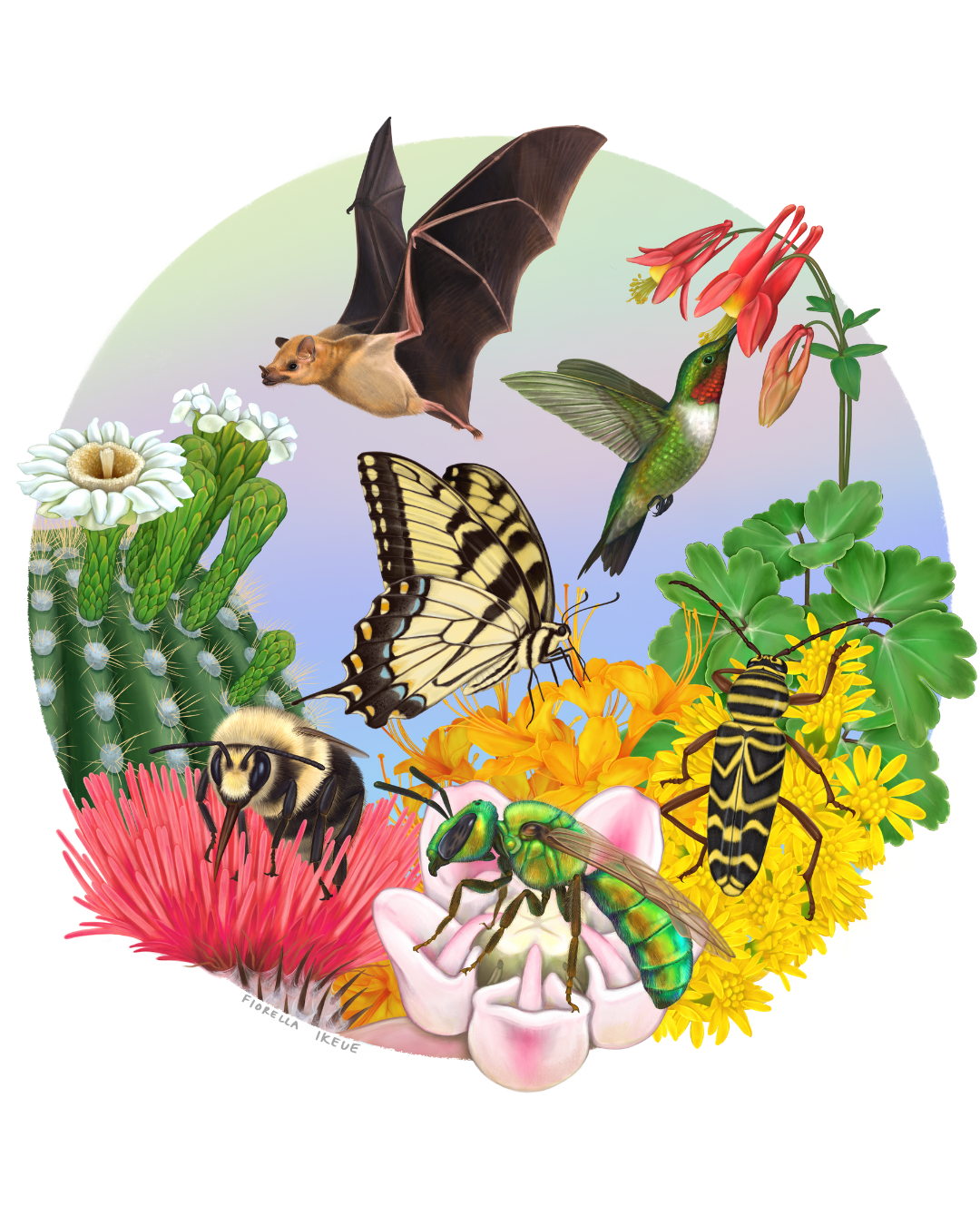
These managed lands do so much more than just support pollinators. They reduce erosion, improve water retention, soil structure, and organic matter, they sequester carbon, and build resilience to climate extremes. From cooler microclimates under solar panels to enhanced soil health in utility corridors, every pollinator planting is also a small climate adaptation win.
Supporting our Managed Lands for Pollinators
Pollinator Partnership works with agencies, landowners, utilities, and companies to embed and enhance habitat into managed landscapes through many of our programs, such as:
Through site-specific guidance and regionally adapted plant lists, we help translate pollinator science into on-the-ground action.
Stay tuned for future posts highlighting real-world examples of our partner projects in each of these managed landscapes—from roadsides to solar sites and beyond!
Want to Help?
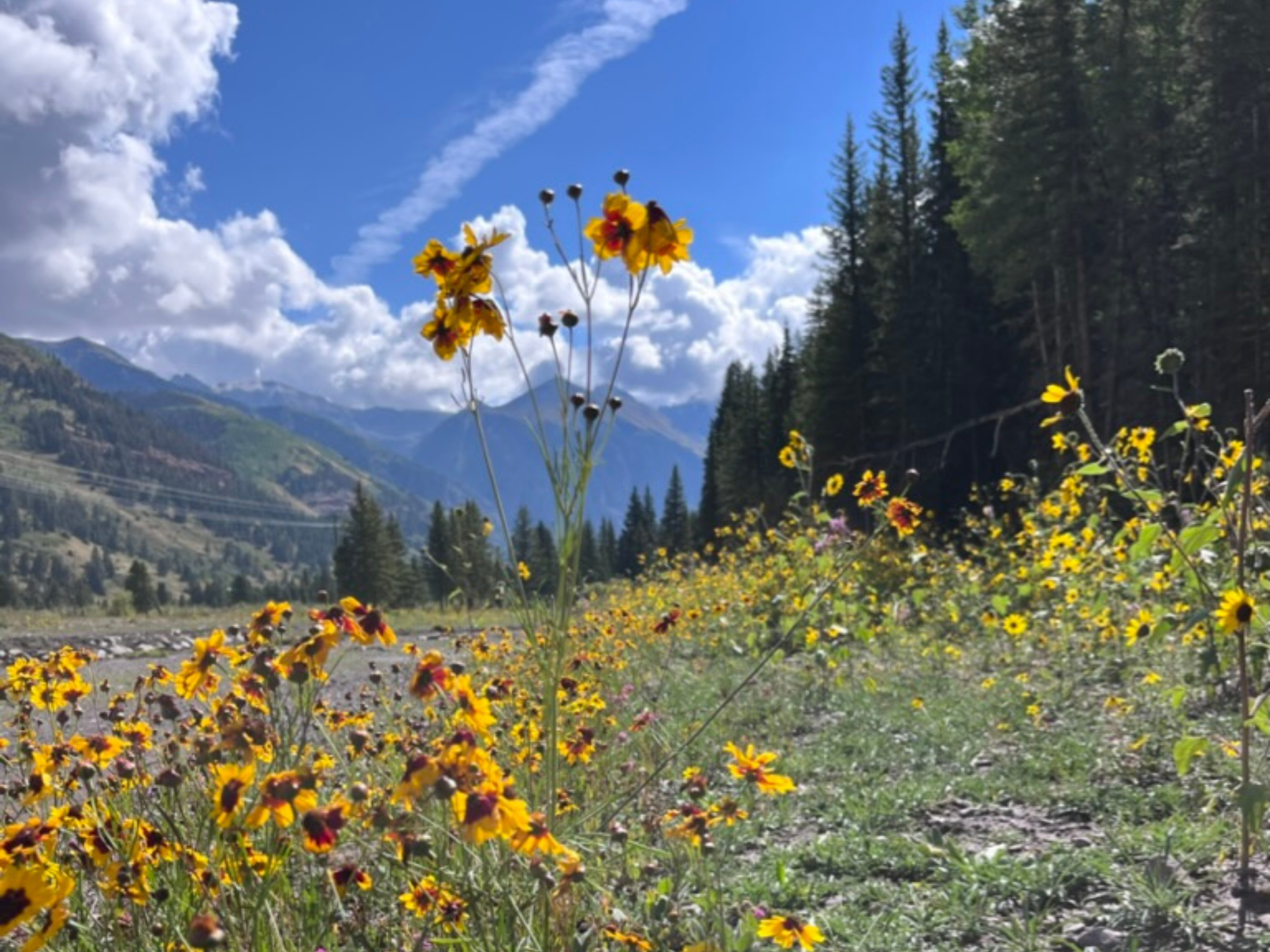
Whether you’re a landowner, local official, conservationist, or simply a concerned citizen, your voice matters! You can help by:
- Talking to your city or state officials about integrating pollinator habitat into transportation corridors, parks, and public lands.
- Advocating for pollinator-friendly standards in solar and utility projects.
- Supporting policies that encourage native vegetation, limit pesticide use, and reward biodiversity on managed lands.
Pollinators are counting on all of us to reimagine what habitat looks like. Let’s make room for them - not just in wild places, but in the working lands that surround us every day.
References
Baldock, K. C. R., Goddard, M. A., & Hicks, D. M., et al. (2015). Where is the UK's pollinator biodiversity? Nature Communications, 6, 7985. https://doi.org/10.1098/rspb.2014.2849
Cariveau, A. B., et al. (2019). Rapid assessment of roadsides as potential habitat for monarchs and other pollinators. Frontiers in Ecology and Evolution, 7, 386. https://doi.org/10.3389/fevo.2019.00386
Featherstone, J., Layton, M., & Schuster, J. (2019). Pollinators on military lands. U.S. Fish & Wildlife Service. https://www.fws.gov/story/2023-06/protecting-our-nation-conserving-our-pollinators
Garibaldi, L. A., Steffan-Dewenter, I., & Winfree, R., et al. (2013). Wild pollinators enhance fruit set of crops regardless of honey bee abundance. Science, 339(6127), 1608–1611. https://doi.org/10.1126/science.1230200
Hopwood, J. L., Black, S. H., & Fleury, S. (2010). Roadside management for pollinators: Enhancing roadside vegetation to support pollinators. Xerces Society. https://xerces.org/sites/default/files/2018-05/16-019_01_FWHA_Roadside-Best-Management-Practices-that-Benefit-Pollinators_web.pdf
Kimoto, C., DeBano, S. J., & Thorp, R. W., et al. (2012). Short-term responses of native bees to livestock and implications for managing ecosystem services in grasslands. Journal of Insect Conservation, 16, 305–318. https://doi.org/10.1890/ES12-00118.1
Kremen, C., Williams, N. M., & Thorp, R. W. (2002). Crop pollination from native bees at risk from agricultural intensification. Proceedings of the National Academy of Sciences, 99(26), 16812–16816. https://doi.org/10.1073/pnas.262413599
Mody, K., Lerch, D., Müller, A.-K., et al. (2020). Flower power in the city: Replacing roadside shrubs by wildflower meadows increases insect numbers and reduces maintenance costs. PLoS ONE, 15(6), e0234327. https://doi.org/10.1371/journal.pone.0234327
U.S. Department of Agriculture Economic Research Service. (2023). Major land uses (MLU) data. https://www.ers.usda.gov/data-products/major-land-uses/
Walston, L. J., Hartmann, H. M., & Macknick, J., et al. (2018). Examining the potential for pollinator habitat at solar facilities in the United States. Environmental Science & Technology, 52(13), 7566–7576. https://doi.org/10.1021/acs.est.8b00020
Wagner, D. L., Metzler, K. J., & Frye, H. (2019). Importance of transmission line corridors for conservation of native bees and other wildlife. Biological Conservation, 235, 147–156. https://doi.org/10.1016/j.biocon.2019.03.042